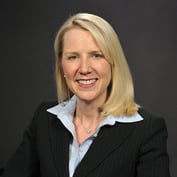Creating a solid, goals-based investment strategy for your clients, one that is subject to continuous improvement, should ideally be your top objective. However, if you are like most advisors, you might be finding it hard to efficiently manage all of your client accounts to this end. It only makes sense that you’d give greater priority to your most important clients.
But as the mass affluent gain prominence in today’s marketplace, “don’t forget the little guy.” According to Boston-based Financial Research Corporation, based on a recent research effort conducted among a sample of more than 30 managers at asset managers, banks, broker/dealers, insurance companies and record-keepers, which together control more than $15 trillion in managed and custodied assets, these financial institutions plan to invest 44% of their capital and effort into developing retirement income offerings for investors with $500,000 to $2 million in investable assets.
Web-based technology can empower financial services institutions to achieve greater efficiencies, increase assets under management, and maximize client relationships; as well as build an organization that will be sustainable over the long-haul.
There are a number of reoccurring concerns that rank high among the challenges that today’s financial services institutions and advisory firms are looking to address. Our experience in providing technology solutions to companies large and small has led us to come up with this Top 10 list of challenges, and suggest ways to address those challenges through the smart use of tech tools.
No. 1: Providing Consistent Advice Delivery
While a broad range of companies can identify with the pain of delivering inconsistent advice, it is felt most by large financial institutions where one advisor attends to a large number of accounts or multiple advisors service the same accounts at different times.
Raleigh-based First Citizens Bank faces the challenge of ensuring consistency in the creation of portfolios and models and the communication between advisors and clients with regard to the investment products it promotes. According to Eric Teal, First Citizen’s chief investment officer, using Web-based portfolio construction and proposal generation technology which allows advisors to create model portfolios across clients with similar time horizons, risk tolerances, and investment objectives, has enabled the organization to “institutionalize the workflow process” for employees, Teal says. Moreover, he argues, it has helped “to ensure consistency among all advisors in terms of our client servicing model as well as how our products are communicated to the marketplace.”
According to Rod Greenshields, manager, wealth management solutions at Russell Investment Group, using a Web-based portfolio construction system allows his organization to ensure that advisors are able to offer consistent data across all accounts in a model portfolio and change model strategies and data all at once. While he admits that the tradeoffs for his advisors might include less direct control over the underlying assumptions used in the system’s calculations, he’s confident that the gains in consistency, predictability and cost control are “worth it.”
No. 2: Identifying Clients’ Risk Tolerance
Being able to conduct a thorough risk assessment process and track it with a thorough audit trail is becoming crucial in today’s financial services landscape for a variety of reasons, including liability and compliance.
Advisors can more closely follow investment policy guidelines with Web-based applications that measure risk tolerance and assign a risk profile via an online questionnaire as well as track the investment proposal and portfolio construction process.
Dennis Clark, CEO of Advisor Partners, LLC, a San Francisco-based advisory firm with $320 million in assets under management, says his firm is extremely diligent in terms of what products it recommends to its clients–a select group of other advisory firms and financial institutions. The company recommends software to automate the proposal generation and portfolio construction process, which not only carefully documents an advisor’s evaluation of each investor’s risk tolerance, but also the investor’s approval of this risk assessment. Workflow-based solutions that document and manage this process have become increasingly valuable to clients of Advisor Partners, like many advisory firms.
No. 3: Ensuring Compliance Through IPSs
With the SEC’s recent decision not to fight the decision to overturn the broker/dealer exemption rule, the issue of compliance has become even more pressing for broker/dealers, banking institutions and independent RIAs. These companies have implemented strategies in tandem with executing an Investment Policy Statement (IPS) or ensuring that investment guidelines are met. Approval of investment plans by compliance officers has also become not just commonplace, but critical.
David Umstead, president of Manchester-by-the-Sea, Massachusetts-based Cape Ann Capital, adheres to investment policy guidelines by using a mixture of performance analysis software and portfolio management tools, including a portfolio rebalancing solution, powered by Advisor Software’s ASI Portfolio Rebalancing Solution, on the TD Ameritrade Veo platform. Umstead continuously monitors each client’s portfolio and ensures that the portfolio is optimized to undertake a level of risk that is acceptable relative to the benchmark.
He uses the TD Ameritrade Portfolio Rebalancing solution to ensure that the client’s assets have not drifted away from the pre-set benchmark, using constraints he sets. Although he can use the tool to simultaneously rebalance multiple accounts within a specific model, Umstead has configured the tool around his business, rebalancing back to a unique model for each client. Cape Ann Capital has no account minimums. Instead, the firm uses technology to extend personalized service to every client, large or small.
For a large retail bank, where the responsibility as a fiduciary weighs heavily on compliance officers, implementing proposal creation software could streamline the compliance review process. Unlike proposals that have been manually created by advisors who cut and paste data and analytics into Microsoft Word documents, portfolios that have been automatically constructed according to the bank’s investment policy statement are less likely to have compliance issues. This provides time savings for the advisor and, ultimately, the compliance officer.
No. 4: Building Scalable Back Offices
From financial institutions and advisors, we hear the desire for tools that sit “in between” the “home grown” application and client/server based solutions, which are not as scalable to a large number of advisors. Scaling for growth by leveraging Web-based technology can enable any size organization to grow assets and revenue without having to add headcount.
Bearing this in mind, achieving a scalable back-office involves a number of factors and there is no silver bullet. Firms will want to consider implementing technology to increase the efficiency of a variety of manual processes.
For example, solutions that allow organizations to improve productivity by streamlining rebalancing can make a big difference.
Schwab Rebalancer, powered by Advisor Software’s ASI Portfolio Rebalancing Solution, is a Web-based tool available to clients of Schwab Institutional. This no-cost solution allows advisors to uniquely leverage near real-time prices on positions. Advisors can automatically rebalance securities; select batches of accounts, single accounts and households with the ability to define households for rebalancing; construct, import and maintain models for securities-based models and target-asset allocations; and validate and execute trades.
No. 5: Curbing Technology Maintenance Costs
Reducing maintenance requirements for IT seems to be an ongoing challenge. As a result, more organizations are considering and purchasing Web-based solutions. Updates, which once painfully consisted of CD patches, are now much more efficient and cost-effective via the Web. Remote application hosting additionally allows organizations to further reduce time, costs, and resources associated with ongoing maintenance.
Russell’s Greenshields says that operational stability and usability are some of the important benefits his organization has realized by implementing a Web-based portfolio construction solution to enhance the company’s investment management services. Unlike an institutional system, which is geared more for the trader, Web-based solutions provide a friendlier user interface and a higher level of accessibility. Implementing a Web-based solution allowed Russell to ensure cost effectiveness, ease of use, and ease of support for advisors while enabling consistency of data and service delivery.








 October 01, 2007 at 04:00 AM
October 01, 2007 at 04:00 AM










